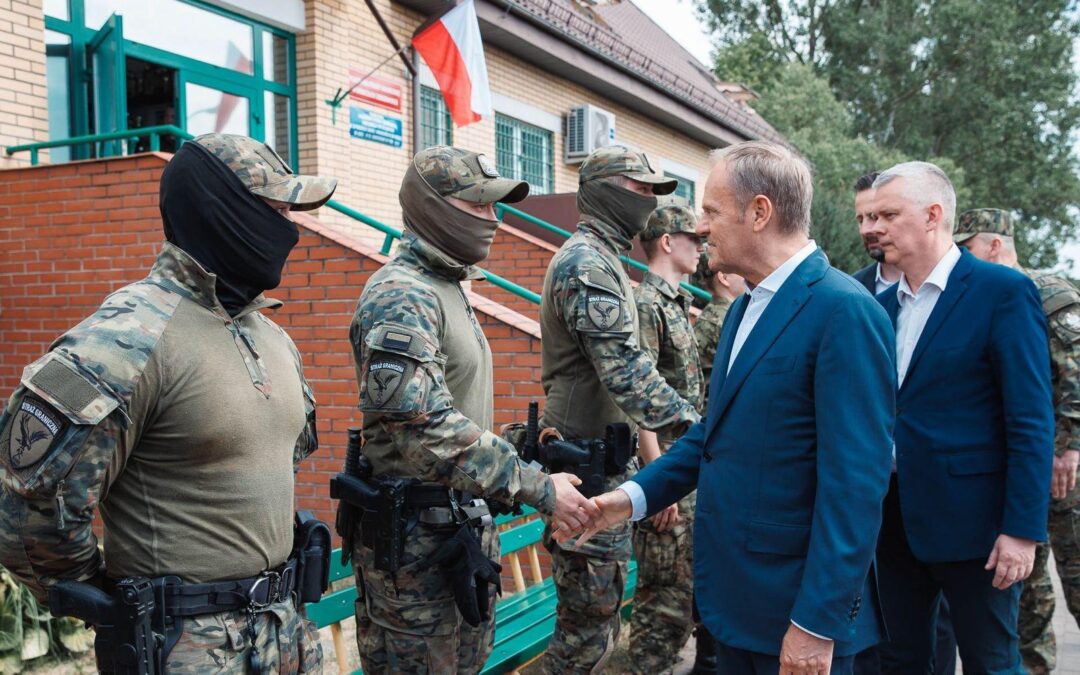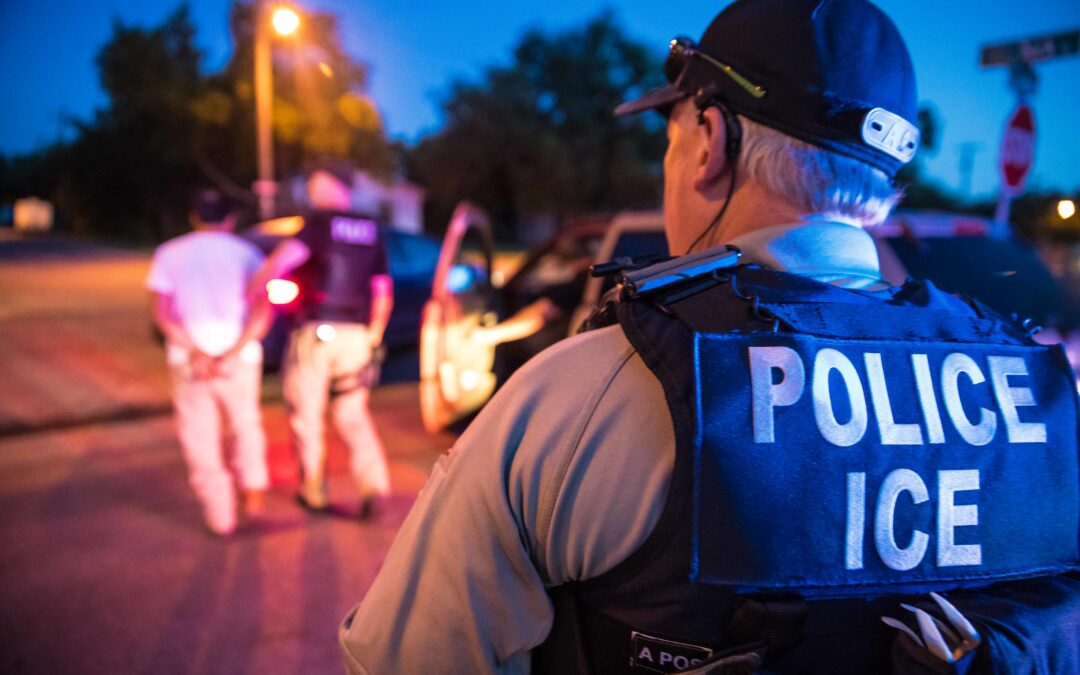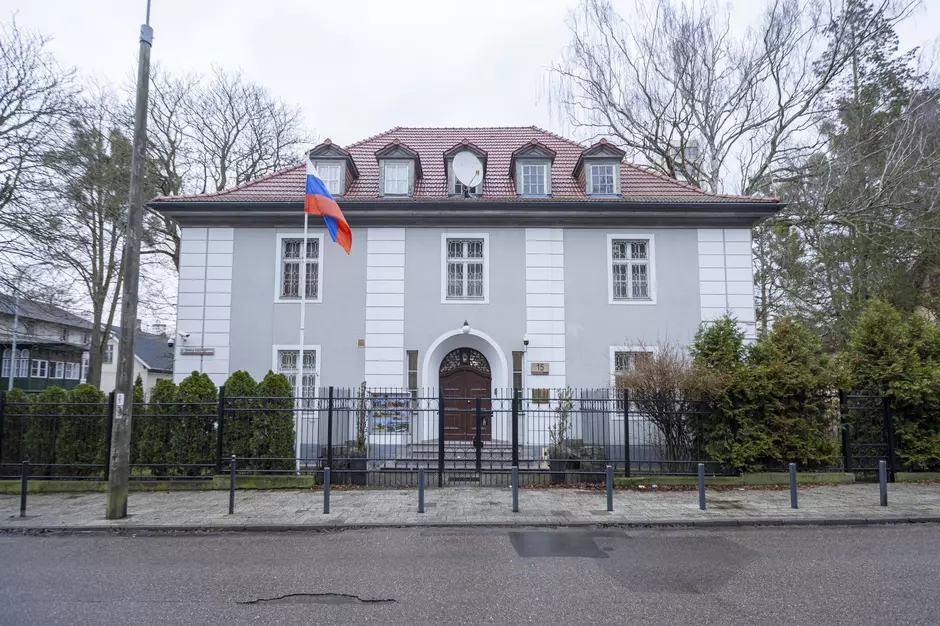Poland has announced the reintroduction of an exclusion zone on parts of its border with Belarus following the stabbing of a soldier by a migrant seeking to cross into Poland. Unauthorised people will banned from entering designated areas along the border.
The decision, announced by Prime Minister Donald Tusk during a visit to the border on Wednesday, marks a return to measures introduced by the former Law and Justice (PiS) government in 2021, at the onset of the migration crisis, and lifted the following year, after the completion of a new border wall.
“We came here today to say that in every situation, especially as dramatic as the attack on our soldier, the Polish state is on the side of soldiers and border guard officers,” said Tusk, speaking alongside defence minister Władysław Kosiniak-Kamysz and interior minister Tomasz Siemoniak.
Their visit came a day after a soldier was hospitalised after a migrant reached through the border fence and stabbed him with a knife. On the same day, two border guards were also injured, one after being attacked with a broken bottle and the other with a knife attached to a stick.
‼🇵🇱żołnierz został dziś ranny po ugodzeniu nożem przez migranta próbującego pokonać barierę na granicy z🇧🇾Wcześniej ucierpieli funkcjonariusze Straży Granicznej. Jednego z nich uderzono stłuczoną butelką,kolejny został ranny po ataku narzędziem,do którego był przytwierdzony nóż pic.twitter.com/XzBacrFnIp
— Straż Graniczna (@Straz_Graniczna) May 28, 2024
“Nobody has any doubts about the nature of the activities we are dealing with,” said Tusk. “It is no coincidence that this aggression is increasing. Every day and every night an officer is attacked. These are organised methods of hybrid warfare, [aimed at] destabilising the Polish state and all of Europe.”
The prime minister announced that, in response to the recent surge in aggression from some of those trying to cross the border, “we will activate all possible measures to keep [officers] safe”, including “restoring the 200-meter buffer zone from the border with Belarus”.
Siemoniak, meanwhile, warned that “We can expect increased pressure on the Polish border”, reports news website Interia. He said that intelligence reports indicate “thousands of people being gathered in Russia” who would then seek to cross the border.
🎥 Dzisiaj rekomendowano nam, abyśmy możliwie szybko przywrócili strefę buforową w pasie 200 m. Tam, gdzie to jest konieczne z punktu widzenia skutecznego działania służb państwa polskiego przy granicy. Wspólnie z całym rządem taką decyzję podejmiemy na początku przyszłego… pic.twitter.com/6F4bEBRayV
— Kancelaria Premiera (@PremierRP) May 29, 2024
Later on Wednesday, the interior ministry published details of the exclusion zone that would be introduced at the border, starting from Tuesday 4 June and lasting for 90 days.
The measures will cover 27 precincts in the counties of Hajnówka and Białystok, reports the Rzeczpospolita daily. Unauthorised people will not be allowed to enter those areas.
However, the newspaper notes that, in contrast to Tusk’s pledge of a buffer zone stretching 200 metres from the board, the restricted areas vary in size and are much larger than he suggested. The largest, covering part of a railway line, stretching around 2km from the border.
Since 2021, tens of thousands of migrants and asylum seekers – mainly from the Middle East, Asia and Africa – have sought to cross into Poland with the encouragement and assistance of the Belarusian and Russian authorities.
Both Poland and its EU partners have described this as a “hybrid” attack designed to undermine the West. In February, Tusk declared that the “survival of Western civilisation” depends upon preventing such “uncontrolled migration”.
Earlier this week, the Polish government unveiled details of a 10 billion zloty (€2.4 billion) plan to fortify its borders with Belarus and Russia. Separately, it is also planning to strengthen measures designed to prevent migrants from crossing the border.
Donald Tusk has pledged further fortification of the border with Belarus, where Poland is facing a "hybrid war of illegal migration”.
The government's approach has been criticised by Agnieszka Holland, who says it is continuing previous "inhuman" policies https://t.co/DDmf43jEF3
— Notes from Poland 🇵🇱 (@notesfrompoland) May 13, 2024

Notes from Poland is run by a small editorial team and published by an independent, non-profit foundation that is funded through donations from our readers. We cannot do what we do without your support.
Main image credit: Krystian Maj/KPRM (under CC BY-NC-ND 3.0 PL)

Daniel Tilles is editor-in-chief of Notes from Poland. He has written on Polish affairs for a wide range of publications, including Foreign Policy, POLITICO Europe, EUobserver and Dziennik Gazeta Prawna.



















